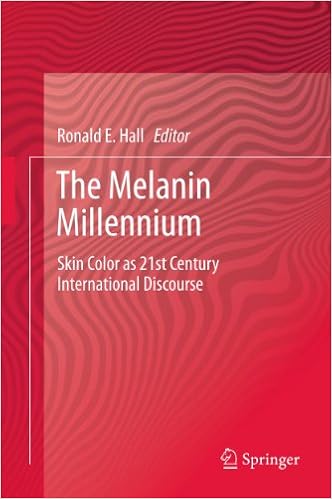Black and Blue: The Origins and Consequences of Medical RacismPosted in Books, Health/Medicine/Genetics, Media Archive, Monographs, Politics/Public Policy, United States on 2013-03-15 20:24Z by Steven |
Black and Blue: The Origins and Consequences of Medical Racism
University of California Press
April 2012
304 pages
Paperback ISBN: 9780520274013
Hardcover ISBN: 9780520248908
John Hoberman
Black & Blue is the first systematic description of how American doctors think about racial differences and how this kind of thinking affects the treatment of their black patients. The standard studies of medical racism examine past medical abuses of black people and do not address the racially motivated thinking and behaviors of physicians practicing medicine today.
Black & Blue penetrates the physician’s private sphere where racial fantasies and misinformation distort diagnoses and treatments. Doctors have always absorbed the racial stereotypes and folkloric beliefs about racial differences that permeate the general population. Within the world of medicine this racial folklore has infiltrated all of the medical sub-disciplines, from cardiology to gynecology to psychiatry. Doctors have thus imposed white or black racial identities upon every organ system of the human body, along with racial interpretations of black children, the black elderly, the black athlete, black musicality, black pain thresholds, and other aspects of black minds and bodies. The American medical establishment does not readily absorb either historical or current information about medical racism. For this reason, racial enlightenment will not reach medical schools until the current race-aversive curricula include new historical and sociological perspectives.
Contents
- Acknowledgments
- 1. THE NATURE OF MEDICAL RACISM: THE ORIGINS AND CONSEQUENCES OF MEDICAL RACISM
- Introduction
- “Avoidance and Evasion”
- Judging How Physicians Behave
- Judging Physician Conduct: Privacy and the “Halo Effect”
- The Oral Tradition
- Physicians Share the Racial Attitudes of Their Fellow Citizens
- The Medical Liberals
- 2. BLACK PATIENTS AND WHITE DOCTORS
- The African American Health Calamity: The Silence
- Medical Vulnerability and Racial Defamation
- How Do (White) Physicians Think about Race?
- Evidence or Medical Racism
- Resistance to the Critique of Racial Bias in Medicine
- Medical Liberalism and the Medical Literature
- The Physician’s Private Sphere
- Playing Anthropologist
- From Racial Folklore to Racial Medicine
- 3. MEDICAL CONSEQUENCES OF RACIALIZING THE HUMAN ORGANISM
- Racial Interpretations of Human Types and Traits
- Introduction
- Racial Interpretations of Black Infants and Children
- Racial Interpretations of the Black Elderly
- Racial Interpretations of the Black Athlete
- Racial Interpretations of Black Musical Aptitude
- Racial Interpretations of Losing Consciousness
- Racial Interpretations of the Nervous System
- Racial Interpretations of Pain Sensitivity
- Racial Interpretations of Heart Disease
- Racial Interpretations of Human Organs and Disorders
- Racial Interpretations of the Eyes
- Racial Interpretations of Black Skin
- Racial Interpretations of Human Teeth
- Racial Interpretations of “While” and “Black” Disorders
- Black “Hardiness”
- Physical Hardiness
- Emotional Hardiness
- Conclusion: How Human Organ Systems Acquire Racial Identities
- Racial Folklore in Medical Specialties
- A Century of Racial Pharmacology: From Racial Folklore to Racial Genetics
- The Role of Racial Folklore in Obstetrics and Gynecology during the Twentieth Century
- Racial Interpretations of Human Types and Traits
- 4. MEDICAL APARTHEID, INTERNAL COLONIALISM, AND THE TASK OF AMERICAN PSYCHIATRY
- Introduction
- “Africanizing” the Black Image
- American Psychiatry as Racial Medicine
- The Racial Primitive in American Psychiatry
- The Task of Black Psychiatry
- Colonial Medical Status
- 5. A MEDICAL SCHOOL SYLLABUS ON RACE
- Introduction
- The Doctor-Patient Relationship
- The Problem Patient
- Medical Authors’ Aversion to Race
- Race and Medical Education: The Search for “Cultural Competence”
- Two Official Versions of “Cultural Competence”
- Physicians’ Beliefs about Racial Differences: A (Belated) Study
- A Medical Curriculum on Race
- Practical Advice for Physicians
- Social Class, Misdiagnoses, and Therapeutic Fatalism
- “Cultural Competence” as Knowledge of Stereotype Systems
- Raceless Humanism: “Medical Humanities” and the Evasion of Difference
- Medical Curriculum Change Is Possible: The Case of Abortion Training
- Notes
- Index


